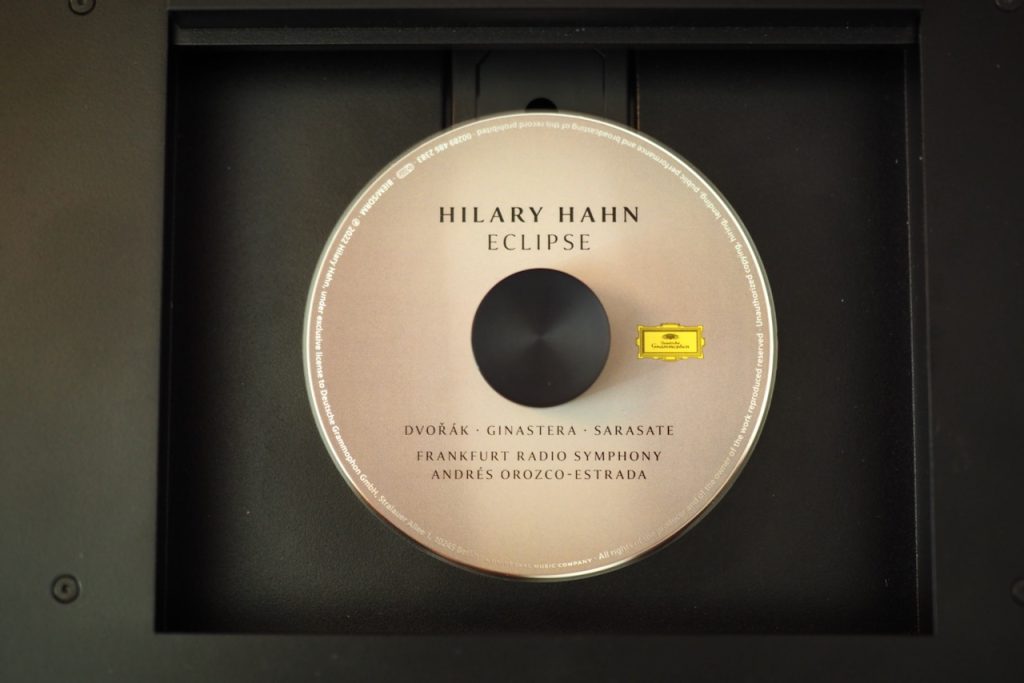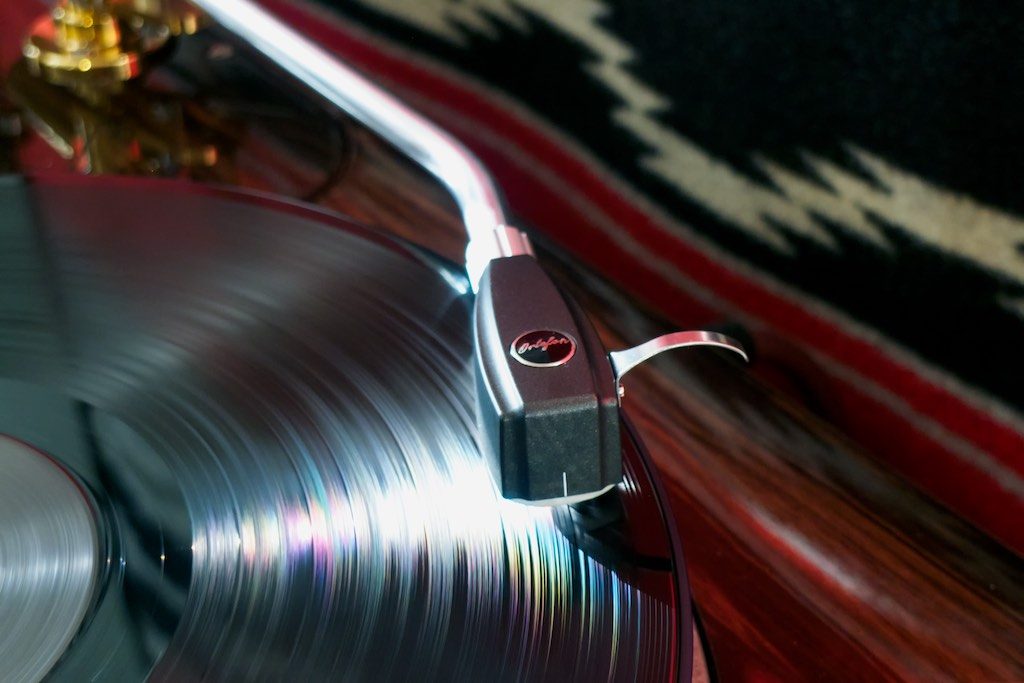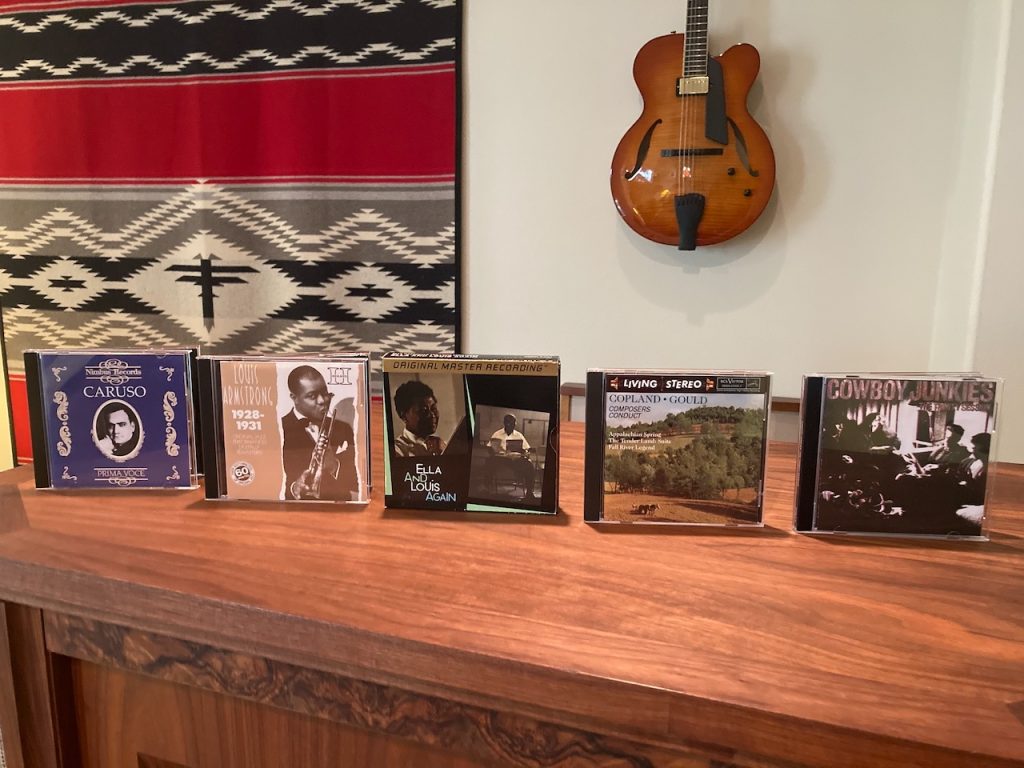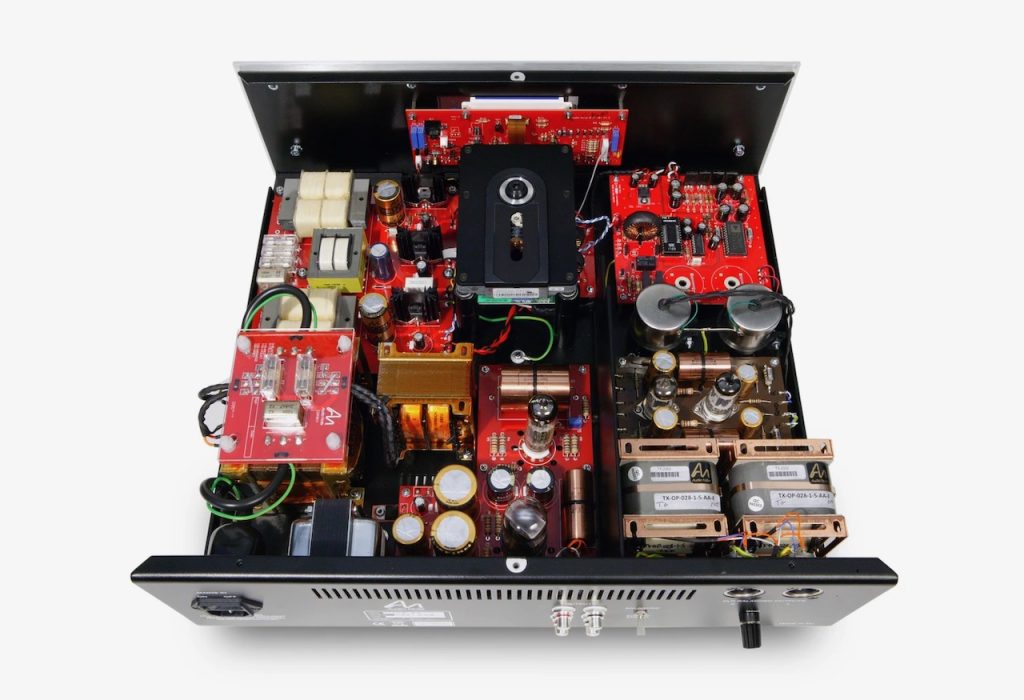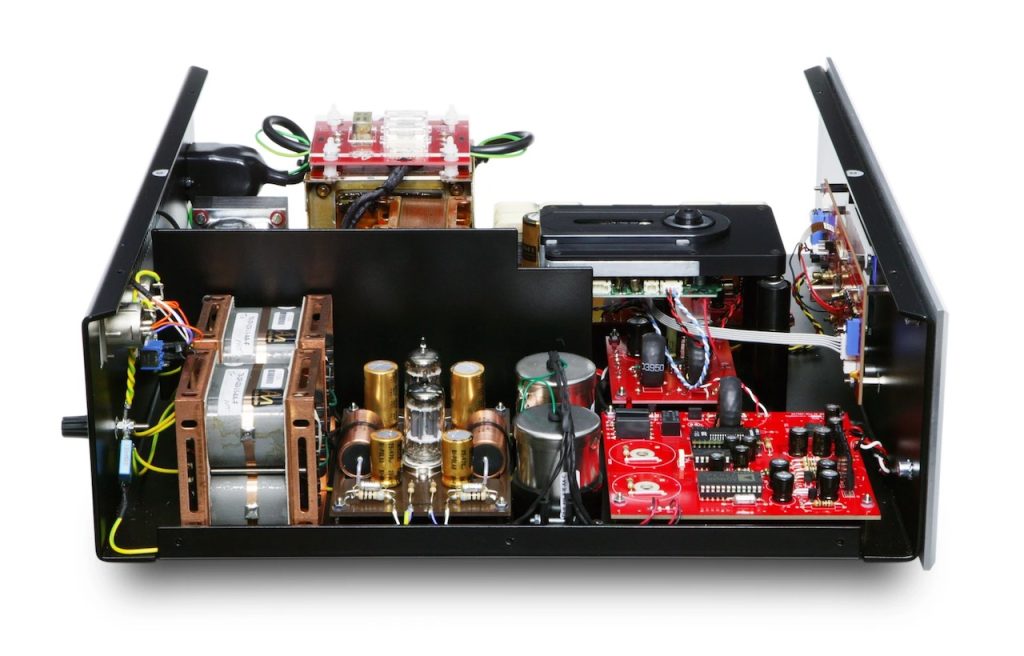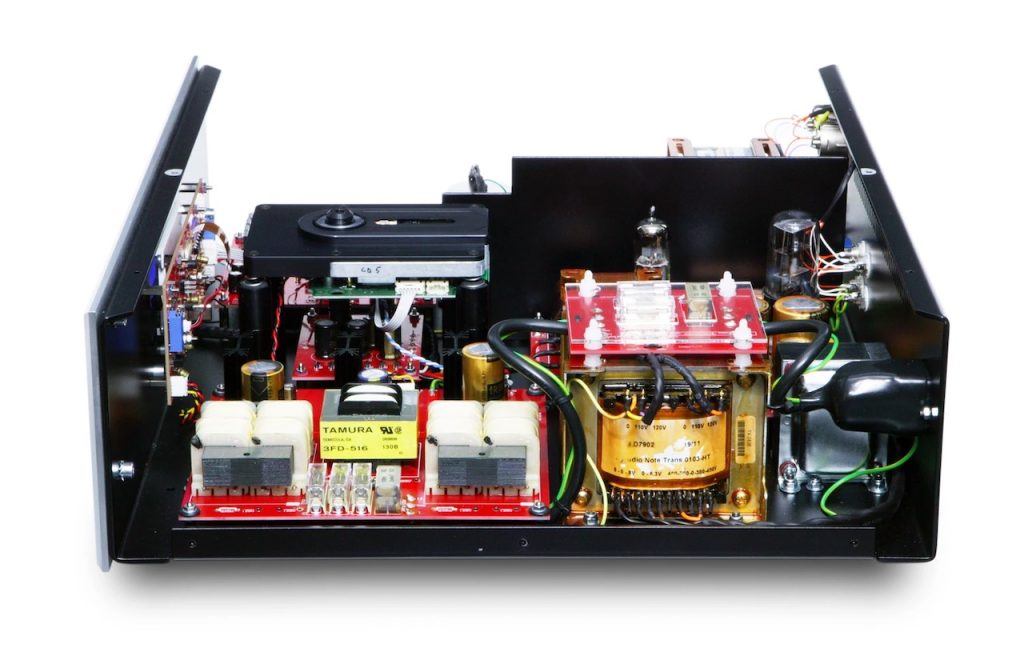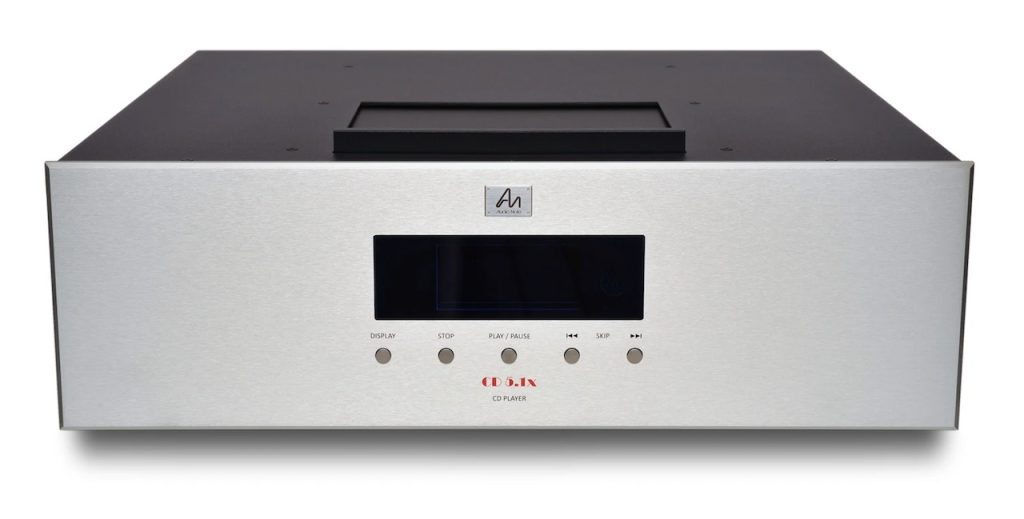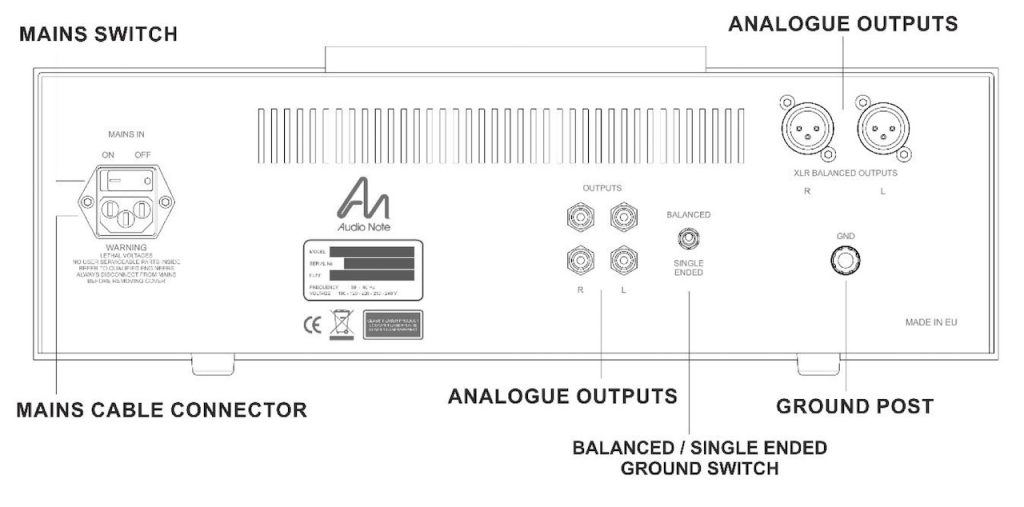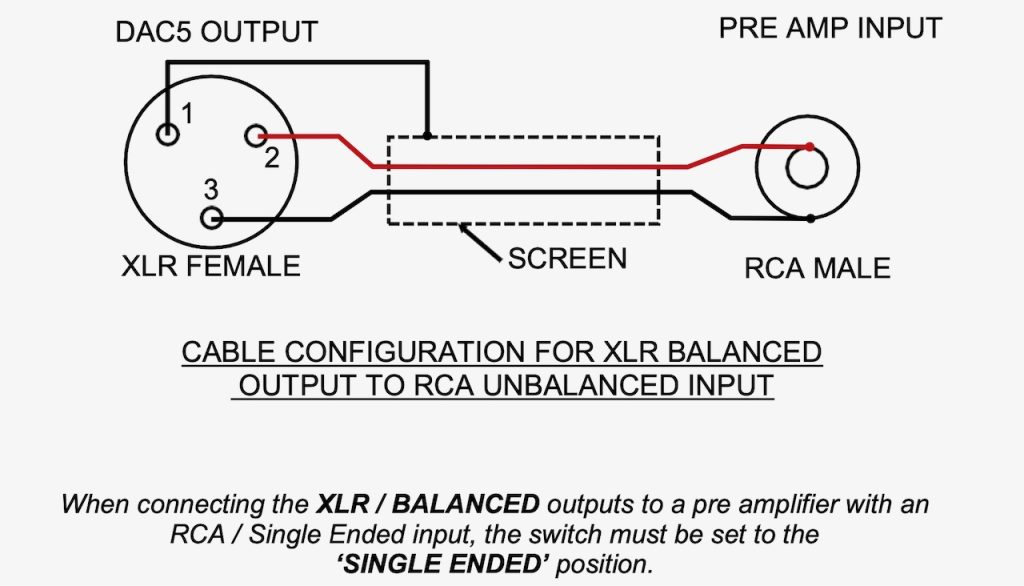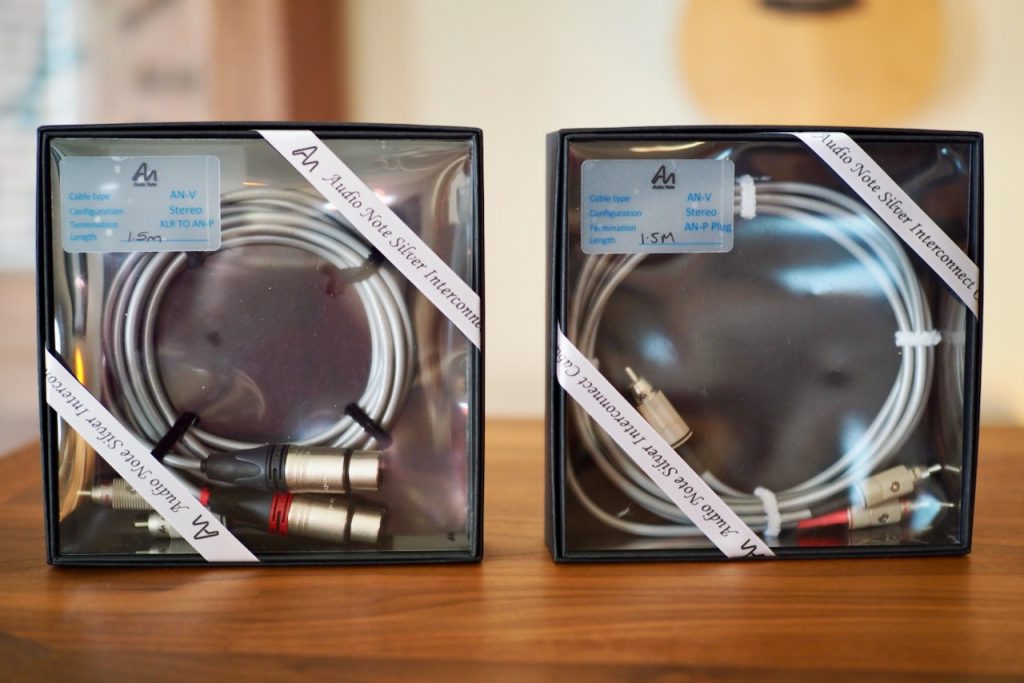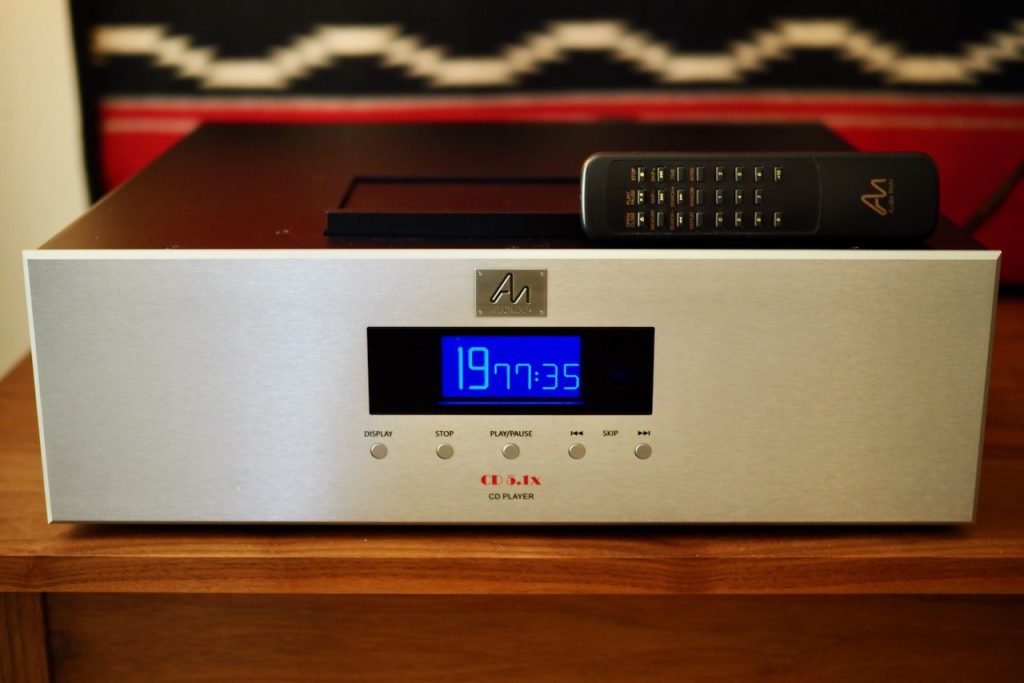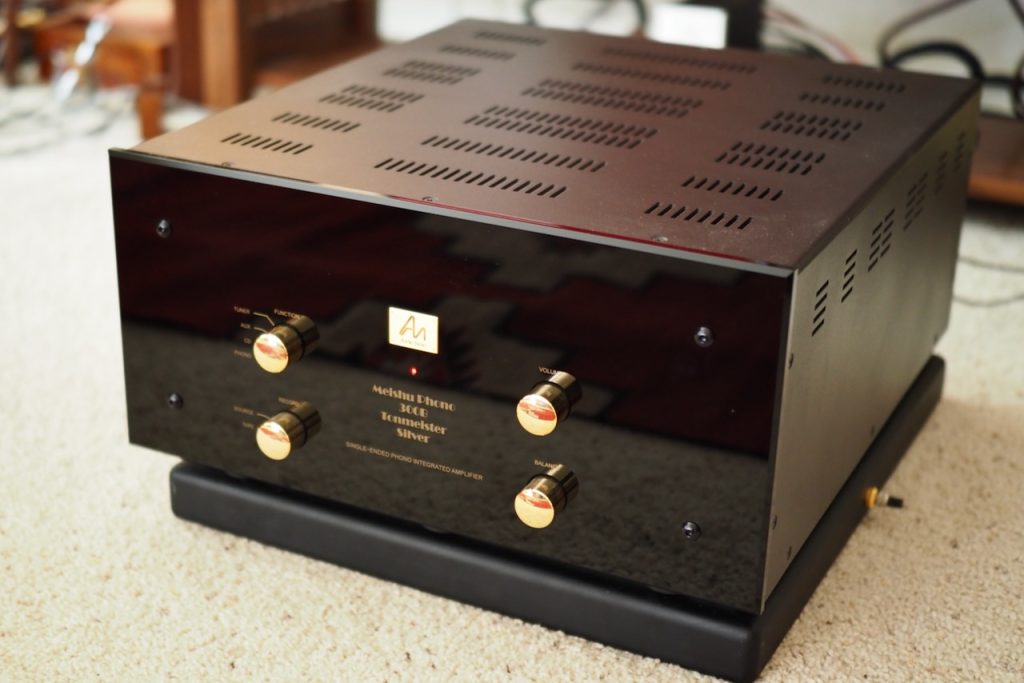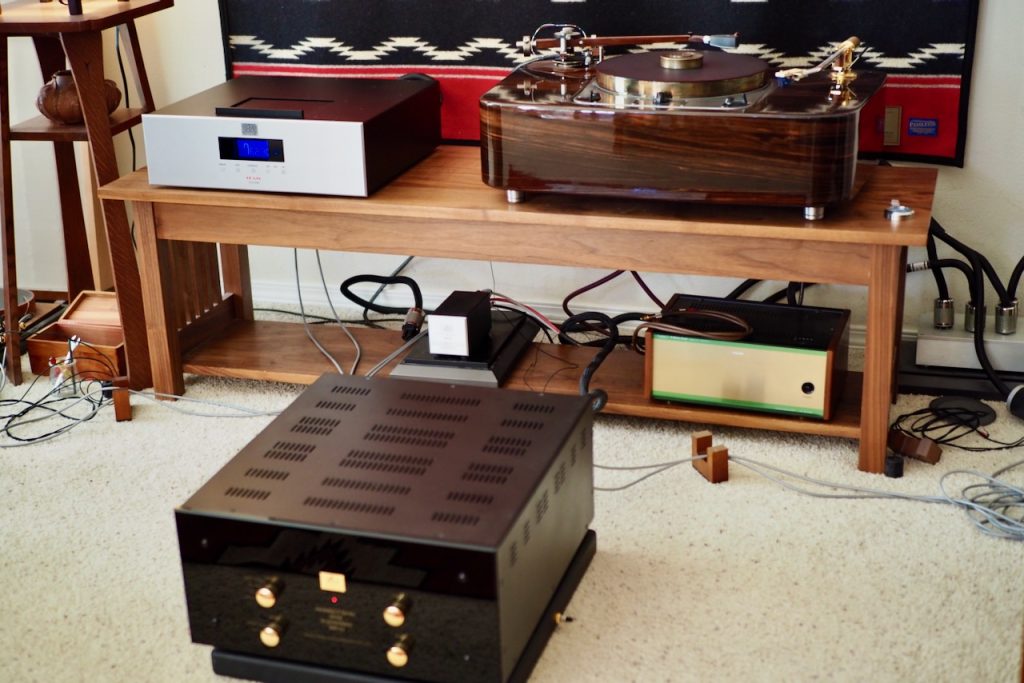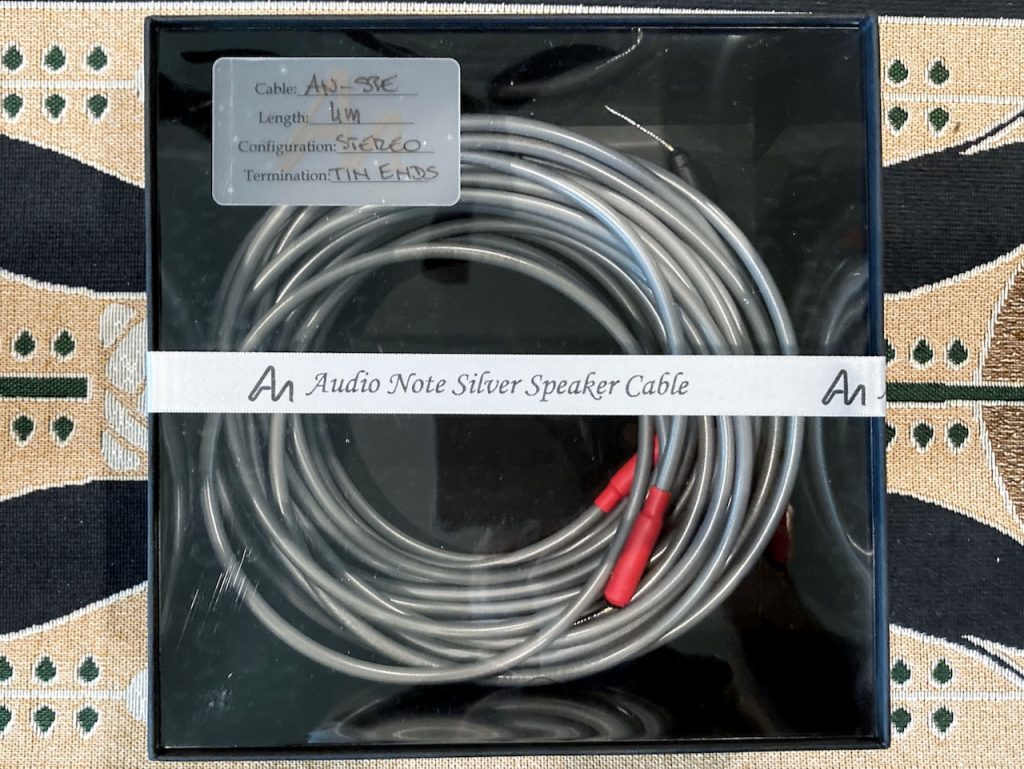The full feature review of the Audio Note (UK) CD 5.1x Red Book CD player is now live on Positive Feedback HERE.
Greeting friends, I hope you are doing well!
As is my custom, I like to share a sneak peek into my upcoming feature reviews for Positive Feedback with all of you here at Jeff's Place.
This one is a doozy, the Audio Note (UK) CD 5.1x Red Book CD player ($30,850 USD), that rewrites what kind of performance I thought was possible from CD players and the Red Book CD format.
Enjoy!
A unicorn is a mythical creature of ancient lore: The body of a white horse with a long flowing mane and tail, a spiral horn in the middle of its forehead, and possessing magical powers like the ability to heal.
In today’s parlance the ‘unicorn’ term is applied to “a person or thing that is rare and highly valued, or is a hypothetical ideal.” (Dictionary.com)
To qualify as a unicorn, a CD player has to meet my ideals for playing back the silvery discs:
1) The best recordings of the stereo magnetic era that we audiophiles so enjoy have to play back at a level of overall fidelity that is comparable to a top-notch vinyl source playing LPs.
2) Recordings from the rest of the recording eras - acoustic, electric, monaural magnetic, and digital - have to play back with an authenticity to the fidelity of their recording eras, while still presenting the recordings at their considerable best in terms of musical fidelity and emotional engagement.
The Audio Note (UK) CD 5.1x is that unicorn CD player that I’ve been dreaming about finding, but didn’t think really existed, until now.
Red Book CD Apologetics
It turns out the major limitation of CDs isn’t the CD format itself, like I once believed, but rather the playback equipment.
Its no secret that the Audio Note (UK) Red Book CD players have challenged my perceptions of what a digital audio reality sounds like, with their analog-like presentation, superb musicality, and exemplary sound quality from Red Book CDs.
Is digital superior to analog? Yes and no. Is analog superior to digital? Yes and no.
Classical music lovers - like the late and great J. Gordon Holt of Stereophile fame - might prefer CDs for their 90 dB dynamic range (vinyl is 55 to 70 dB), which means less dynamic compression (and the possibility for none), and their up to 80 minute playing time, which potentially enables listening to a full concert uninterrupted (where vinyl is an interrupted listening session over multiple LP sides).
There is also less surface noise from CDs than vinyl, and they don't develop audible signs of wear after repeated playing like vinyl does. A CD collection also takes up less space than a vinyl collection, so you can get a bigger music library into the same amount of space.
Vinyl aficionados will point out that the frequency range of vinyl is potentially 7 Hz to 50KHz (but more likely the lower end is 20 to 30 Hz), and while theoretically vinyl high-frequencies handily exceeds that of CD (CDs top out at 22.5KHz), in reality most phono cartridges poop out around 17-18kHz.
That theoretical extended bandwidth of vinyl could potentially deliver more openness, more spaciousness, and more soundstage depth than CDs, but the reality is that a first rate CD player like the CD 5.1x can deliver more bandwidth from CDs in more audio systems than most vinyl sources can.
Recording engineers are saying that for recording purposes, the signal that goes from the microphone to the recorder, and the signal you get back from the recorder, is more accurate for digital than it is for analog.
They also say today's best digital transfers from analog master tapes are indistinguishable from each other in sound quality. They also say that masters transferred to CDs are much closer to the original master recordings than those transferred to LPs, which will typically require more dynamic compression.
Personally, I enjoy both digital and analog formats, and I have large collections of both. When each type of format is optimized during mastering specifically for a CD, or a vinyl record, you can bring the strengths of each type of media to the software, with the end result being that they are both very, very, high-fidelity, but perhaps just in slightly different ways.
It turns out that both vinyl and CD playback components have evolved to a point where they can offer very high-fidelity presentations from recorded music, and I am really enjoying listening to both formats.
Early CDs sounded pretty bad compared to the best magnetic era vinyl records, which drove us audiophiles crazy.
There's two primary reasons for that, with one being that a master tape optimized for vinyl isn't optimum for the CD format. If you just transfer that optimized for vinyl master recording to CD it might not sound so good.
That's one of the reasons why you see so many remastered albums these days, as those original session recordings likely needed to be optimized differently during the mastering process for CDs and vinyl. It took a while for audio engineers to get all of that sorted out.
If you transfer a recording mastered for use on CD that takes advantage of its wider dynamic range, it's probably not going to work on vinyl, where it will need more dynamic compression.
Then there's a second major reason for early CDs sounding worse than the best vinyl records, and in my opinion probably the biggest reason: The design of early CD players weren't really able to extract the musical content from CDs very successfully, so they sounded visuospatially flat, sterile, brittle, and just generally unpleasant in comparison to the best in vinyl playback.
That's all changed with excellent Red Book CD players like those from Audio Note (UK), which are CD players that can rival the vinyl listening experience with their analog-like presentation, superb musicality, and exemplary sound quality.
But that's only part of the Audio Note (UK) CD players allure for me, as where they really seduced me was by opening up the ability to listen to recorded musical performances from all the periods of our recorded music canon with just one source component.
No longer is there a need to have multiple source setups to play acoustic & electric era recordings, with their myriad equalization requirements necessary to hear them at their considerable best, or to have dedicated monaural and stereo moving-coil cartridges, tonearms, and phono stages optimized for the playback of magnetic era recordings on vinyl.
Which by the way, with top notch kit, all of that adds up to more than even the lofty price of the CD 5.1x ($30,850 USD).
CD 5.1x Technical Description
As most of you know, I’m a huge fan of integrated amplifiers, and almost all my favorite amplification devices are integrated.
There’s usually a cost benefit to integrateds compared to separates, often a performance benefit, and they make it much easier to build and setup a high-performance, high-fidelity, ‘forever’ audio system. All good things in my book.
Like the late lead engineer at the Lockheed Skunk Works, Kelly Johnson, was fond of saying, “keep it simple, stupid”.
For me, part of keeping it simple with audio technology is going integrated.
In that spirit, I think it’s a misnomer to think of the Audio Note (UK) 5.1x as just a CD player.
In reality the CD 5.1x is an über quality transport and digital-to-analog converter (DAC) integrated into a single chassis, or as I like to think of the CD 5.1x, it is the equivalent of a Skunk Works ‘Special Edition’ integrated version of the top-loading Audio Note (UK) CDT Three CD transport and the digital section from the balanced DAC 4.1x.
I really like the integrated transport-DAC nature of the CD 5.1x, as it allows me to create a simple source, amplification, and loudspeaker system combination that is at a lofty level of high-fidelity performance.
Up until now I’ve been listening to the extremely satisfying and award winning Audio Note (UK) 4.1x CD player (review HERE), so I asked Darko Greguras - Audio Note (UK)'s digital design guru - if he would tell us about the differences between these two titans of CD players.
Here's what Darko had to say:
"In simple terms, the CD5.1x combines elements of the CDT Three CD transport and the digital section from the DAC 4.1x Balanced, where CD4.1x is closer to a combination of the CDT Two/II CD transport and an upgraded DAC2.1x. So there is a very large difference between the two models, both in design and component choices."
"Our decision to go that far with a single chassis CD player meant the biggest technological and philosophical difference between any other two CD players in our range."
"On the CDT side of its design, the CD5.1x has an advantage by utilizing an improved PSU for the motor section, combined with a more sophisticated dual differential SPDIF buffer. These important technical aspects help to ensure and preserve greater authenticity, a fuller presentation at the lower end of the spectrum and more subtle low-level information retrieval. Maintaining this level of nuance is critical at this stage, as that which is lost during this very first step (i.e. the source) will be lost forever."
"The differences in the DAC sections are even greater (above): the digital board is identical to the one found in the DAC5 Special, DAC5 Signature, and the Fifth Element. The AD1865 onboard discrete PSU is based on an ultra-low noise open loop shunt arrangement feeding the AD1865, followed with a pair of copper-copper I/V transformers wound in-house on larger cores. This is, technically, the heart of the conversion, and the design target was very clear; to retain the natural signal flow with an improved energy extraction thanks to the larger cores of these I/V transformers.”
"The line stage is based on our M5 Line Preamplifier, so a ‘mini power amplifier’ arrangement around the ECC82 vacuum tube (or 5814A, as used here) and the juicy 5687, through a pair of 35:1 SHiB double C core step-down transformers, which are designed to provide the best dynamic transfer.”
"This is a major upgrade over the CD4.1x’s SRPP ECC88 vacuum tube stage, and provides a far greater sense of power, grip (especially during a very quiet listening session), and low level signal retrieval. It also results in a dramatically reduced output impedance, typically < 10 Ohms.”
"The HT regulator uses a combination of ECL82 and 6X5 vacuum tubes. This configuration stores less energy in the HT capacitors, which results in far closer signal tracing compared with the more traditional, passive arrangement in the CD4.1x. It is a classic, robust, trustworthy, and elegant design.”
Many thanks to Darko for telling us about the design of the CD 5.1x compared to the CD 4.1x.
If you look at the Audio Note (UK) website for the CD 5.1x, there's a few other details of interest:
"(The CD 5.1x is a) Level Three Red Book CD Player. The CD 5.1x is a completely new machine which elevates the one-box CD player to hitherto unknown levels of performance. Never before has it been possible to achieve such quite astonishingly superior levels of digital replay from a single chassis, integrated design.”
"The CD 5.1x features the top-loading Philips CD Pro 2LF CD mechanism, which we custom modify and improve in-house, bringing the performance of this already excellent mechanism up to a standard that is truly in a class of its own.”
"The power supply is a valve rectified and regulated design, using a 6X5 and ECL82.”
"The analogue output stage uses a combination of 1 x 5814a and 1 x 5687WB valves, feeding a pair of our world-renowned output transformers, using SHiB cores with copper primaries and secondaries.”
"A mix of our own 0.5 watt and 1 watt non-magnetic Tantalum resistors are used in all critical areas, as are our own custom Audio Note (UK) foil / Mylar and electrolytic capacitors.”
"The CD 5.1x uses our own in-house designed and manufactured digital transformers; silver wound for the transport side, and copper wound for the DAC side.”
I should also mention that the über build quality of the CD 5.1x makes it as heavy as the Audio Note (UK) Oto Phono SE Signature integrated amplifier (~ 37 pounds) that I reviewed in Issue 108, which means you'll want to exercise care when unpacking it or moving it around on or between equipment racks if you want to protect your back. I found myself hobbling around for a week due to not according the CD 5.1x proper respect with my lifting technique when moving it between audio systems. It's heavy!
Installation and Operation of the CD 5.1x
A quick perusal of the owner's manual reveals some interesting details about installing the CD 5.1x into your audio system, and how to operate it.
First you'll want to get the CD 5.1x installed into your audio system, so let's take a look around back.
From right to left (below): On the top right you can see a pair of XLR outputs, with a ground post just below them. To their left is a balanced / single ended ground switch. Towards the center of the chassis are two pairs of RCA outputs (one pair to go to the preamp or integrated amp, and the other pair for a recording device should you desire that). On the far left is an integrated IEC 320 mains inlet / switch to plug the power cord into and power on/off the CD 5.1x.
Your first installation decision will be to decide if you want to use the XLR or RCA outputs, which will be dependent upon the other components in your audio system.
The two pairs of RCA outputs at 1.2V are for use with hi-fi kit that utilizes RCA inputs, and the pair of balanced XLR connectors with 2.4V of output are for those owners with balanced connections on their preamp, or for pro use with components that use balanced XLR connectors.
I was curious why the CD 5.1x has an RCA output voltage of 1.2V when the CD 2.1x/II and CD 4.1x I reviewed have an output voltage of 3V, so I asked Darko about it:
“The CD5.1x has, as you noticed, a lower single ended output voltage than the lower-Level CD players in the range. This was a deliberate choice, with the intention of making it more of a universal player, that will work - from the perspective of total system gain - with a wide range of amplifiers and pre / power combinations. So for instance, the CD5.1x will work equally well with a Meishu Tonmeister, with 30dB gain, as with a classic pre / power combination such as the M5 and a pair of Quests (300B SET mono amplifiers), with 50dB gain. The same is true of our upper-Level DACs, such as the DAC4.1x Balanced, DAC5 / DAC 5 Signature and the Fifth Element / Force. All of these have the same 1.2V single ended output voltage.”
If your preamp or integrated amplifier has XLR inputs you'll want to use the XLR outputs of the CD 5.1x, and if they have RCA inputs you'll want to use the CD 5.1x's RCA outputs.
The owner of a CD 5.1x also has the option of running an interconnect terminated on the CD 5.1x end with XLRs, and on the preamp-amp end with RCAs, which will deliver 2.4V. This XLR to RCA interconnect option can be a handy 'nitro-boost' choice for those with low total system gain like you might experience with flea-power SET amplifiers.
Here's a few examples from my own use of the CD 5.1x:
First example: The CD 5.1x's 1.2V RMS single-ended output voltage can achieve full output from amplifiers given a typical audio system gain structure, as with the 65 watt per channel Mactone MH-120 stereo amplifier I recently reviewed for Positive Feedback (HERE), where I used the CD 5.1x in single-ended output mode to excellent effect as the source component for that review.
With the 65 watts per channel Mactone MH-120 amplifier, the CD 5.1x's 1.2V RMS output voltage could easily drive my 99dB sensitive Tannoy Westminster Royal SE loudspeakers to live-like levels with plenty of power to spare.
Second example: The "nitro boost" feature comes in handy for those of us with flea powered SET amplifiers, like for example, the 2 watt Triode Lab 45 EVO SET integrated amplifier that I use as one of the reference amplifiers with my West's.
The "nitro boost" feature also worked very well with the Audio Note (UK) Meishu Phono Silver Tonmeister 300B single-ended-triode (SET) integrated amplifier used in this review.
Here's how the "nitro boost" feature of the CD 5.1x works:
To utilize the "nitro boost" feature of the CD 5.1x, all you need is a pair of XLR to RCA terminated interconnects per the above diagram, which Audio Note (UK) will make for you on a custom basis should you desire to go that route.
After installing the XLR to RCA interconnects, and placing the CD 5.1x's rear panel output switch to the single-ended position, it will now deliver 2.4V RMS to a pair of RCA inputs on a preamplifier or integrated amplifier.
Voilà, now you have an adequate audio system gain structure even with ultra low-power / low-gain SET amplifiers.
After you've selected what interconnect option to use, then you plug in the power cord, and power up the CD 5.1x, and then the rest of your audio system.
After a suitable warmup period, then its time to open the sliding disc cover of the top-loading Philips CD Pro 2LF CD mechanism, and place the CD on the spindle, followed by the magnetic disc clamp that holds it firmly in place.
When the sliding top cover is closed the CD 5.1x will read the disc's data. Now you are ready to play your CD, and you can use either the front panel buttons or the remote control to initiate playback.
The front panel buttons are the usual play/pause, skip, and stop controls, with an additional button that allows you to dim or turn off the display for those late night listening sessions.
The remote control has additional functions that allow you to play the CD tracks in a different order, omit tracks, or to just generally program it to play back CDs in whatever fashion you wish.
Audio System for This Review
For this article I used my Tannoy Westminster Royal SE loudspeakers that have been hot-rodded with an internal rewire using vintage Western Electric WE16GA tinned-copper wire, and custom external Duelund crossovers that utilize pure silver Duelund CAST components in the high-frequency / midrange circuit, and Duelund CAST pure copper components for the rest, with Duelund DCA16GA tinned-copper wire connecting everything together within the crossover.
The Audio Note (UK) Meishu Phono Silver Tonmeister 300B single-ended-triode (SET) integrated amplifier (review HERE) was connected directly to the external Duelund crossovers with Audio Note (UK) AN-SPe silver loudspeaker cables.
The Audio Note (UK) CD 4.1x and CD 5.1x were connected to the Meishu with Audio Note (UK) AN-V interconnects terminated with RCAs, and a pair of AN-V silver interconnects terminated with XLR connectors on the source end, and RCAs on the Meishu end (more HERE), respectively.
The vinyl front end was my CTC Garrard 301 fitted with a Schick tonearm and an Audio Note (UK) Io I MC phono cartridge, with the signal going to an AN-S4 step-up transformer, and AN-V silver interconnects connecting it to the Meishu.
Cable thoughts: Audio Note (UK) components are voiced to be at their optimum level of performance with the their own cables. For this Level of components the AN-V silver interconnects and AN-SPe silver speaker cables were recommended to me for the best performance. Indeed I did find that to be the case, as when I substituted other cables for the AN-V & AN-SPe combination it noticeably compromised the overall performance of these components.
The wall AC outlets consisted of Acoustic Revive CB-1DB receptacle base plates, CFRP-1F carbon fiber outlet plates, and custom modified Acoustic Revive modified Oyaide R-1 receptacles.
AC from the outlet to the Acoustic Revive RPT-6 Absolute NCF Power Distributor was via an Acoustic Revive Absolute power cable, and power cables to components were a mix of Acoustic Revive Power Reference TripleC NCF AC power cables (amplification components), and Acoustic Revive Absolute power cables (source components).
Listening
Ok, that's all for now. In the next few weeks the full feature review of the Audio Note (UK) CD 5.1x Red Book CD player will be published at Positive Feedback.
As always, thanks for stopping by, and may the tone be with you!





